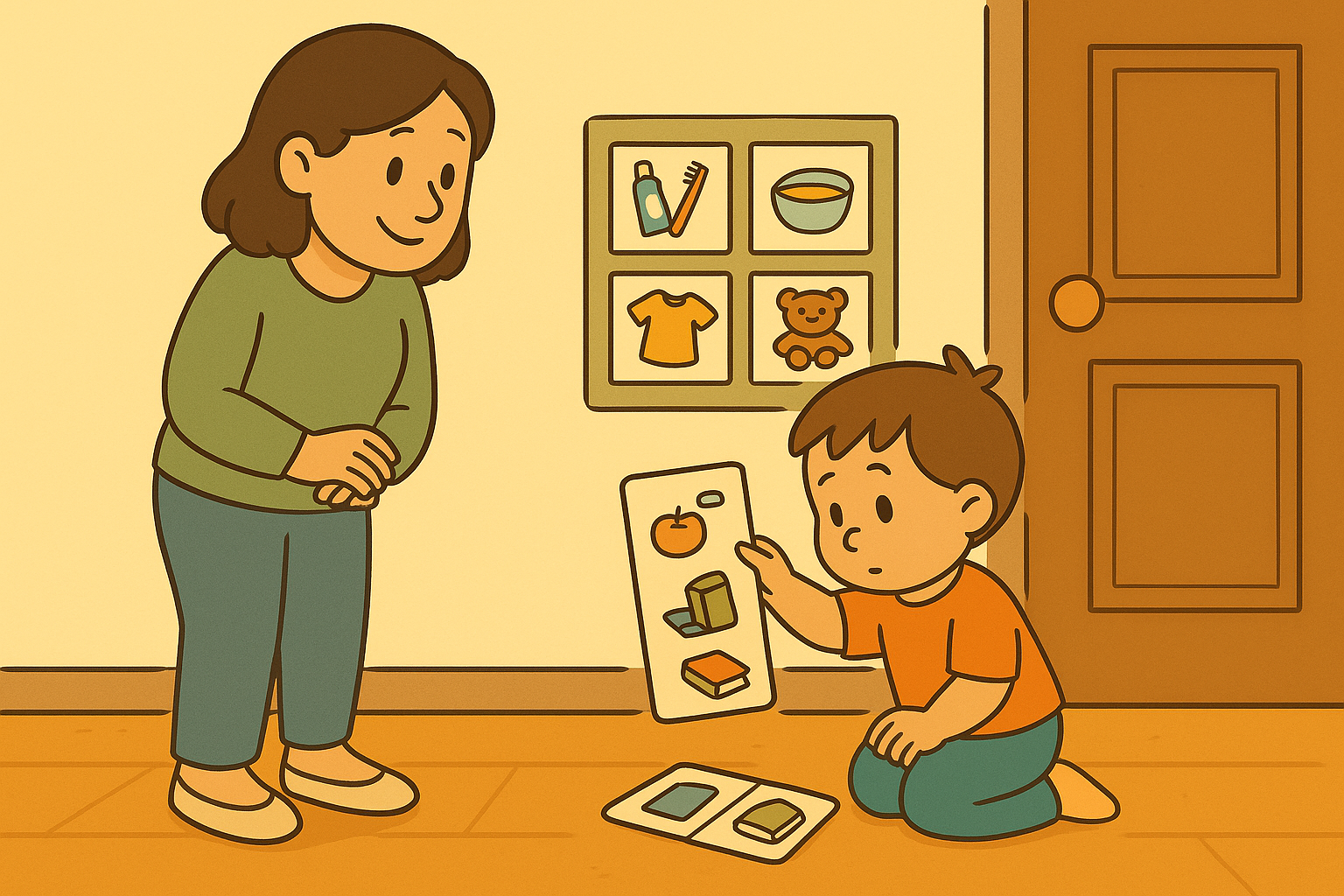Encouraging Autonomy Through Predictable Patterns
Encouraging Autonomy Through Predictable Patterns
Why Predictable Patterns Build Independence
True autonomy doesn’t come from being told what to do — it grows when children can predict what comes next and take action on their own. Predictable patterns give children the confidence to participate. When routines are familiar, the brain no longer spends energy figuring out what’s happening — and that frees mental space for independence. Predictability is not about control — it’s about removing confusion so children can discover their own capabilities.
The Link Between Autonomy and Pattern Recognition
Autonomy depends on a skill that toddlers and preschoolers are just beginning to develop: pattern recognition. When routines follow clear patterns, children begin to understand sequencing — first this, then that. This helps with:
Decision-making
Planning
Executive function
Emotional regulation
Confidence and ownership
These benefits strongly mirror insights from How to Use Routine to Reinforce Learning Skills, where routine quietly strengthens cognitive abilities through everyday life.
Predictability Creates Emotional Safety
Children can explore new roles when the day feels steady. Consistent patterns assure them:
“The world makes sense.”
“I know what to expect.”
“I can be part of how things work.”
“My effort matters.”
Autonomy requires courage — and courage grows best in safe rhythms. Similar principles are found in The Importance of Predictable Transitions for Toddlers, where steady cues reduced stress during change.
What Predictable Patterns Actually Look Like
Predictability doesn’t require rigid scheduling — it simply requires familiar order. For example:
Morning: wake → bathroom → breakfast → get ready
Afternoon: snack → quiet/play time → reset → dinner prep
Evening: dinner → cleanup → bath → story → sleep
Consistency helps children internalize steps. Once a pattern is memorized, the child can begin to lead it.
Inviting Children to Take the Lead
Autonomy thrives with participation — not pressure. You can gently shift responsibility by saying:
“Do you remember what comes next?”
“Would you like to be in charge of this step?”
“Show me how you like to do it.”
“You start, and I’ll follow your lead.”
Small leadership moments build lasting self-confidence.
Visuals That Support Independence
Visual cues reduce reliance on verbal directions and promote self-guided action. Try:
Picture routine cards
Role/job charts
Velcro or magnet step trackers
Choice boards (“Which shirt today?”)
Step-by-step icons near sinks or backpacks
This approach echoes strategies in Teaching Kids Responsibility Through Routine Tracking, where visuals helped children shift from compliance to ownership.
Turning Routine Into Real Decision-Making
Autonomy happens when children choose within structure. Examples:
Choose between two outfits
Pick the order of bedtime tasks
Select their breakfast dish
Decide how to organize their play area
Choose a “calm activity” before rest time
Predictability offers emotional safety — but choice gives it meaning.
Repairing Resistance Gently
When patterns shift or children resist, repair can restore collaboration:
“Do you want help or space?”
“It’s okay to feel off today — our routine can go slowly.”
“Which step feels hard? Let me help you with that one.”
“You don’t have to do it perfectly — we’ll do it together.”
These strategies align with How to Handle Resistance to Routine Changes, where guidance softened emotional confusion.
When Autonomy Starts to Emerge
Signs that predictable patterns are working:
Children remember steps without prompting
They begin tasks independently
They wait for fewer directions
They solve minor problems on their own
They take pride in participation
Autonomy doesn’t appear suddenly — it unfolds quietly, step by step.
Adapting Autonomy as Children Grow
As routines become familiar, responsibilities can expand. For toddlers, one or two steps may be enough. For older children:
Let them create parts of the routine
Include “leadership” roles
Add reflection time (“How did the day go?”)
Use checklists designed by them
Over time, predictable patterns slowly become personal disciplines — a foundation for lifelong self-management.
Predictable patterns don’t make children passive — they make children capable. When the day is structured with clarity and warmth, children don’t just follow routines — they begin to own them. And in that ownership, autonomy flourishes.
This content is for educational purposes and is not a substitute for professional medical or psychological advice.
Popular Parenting Articles


